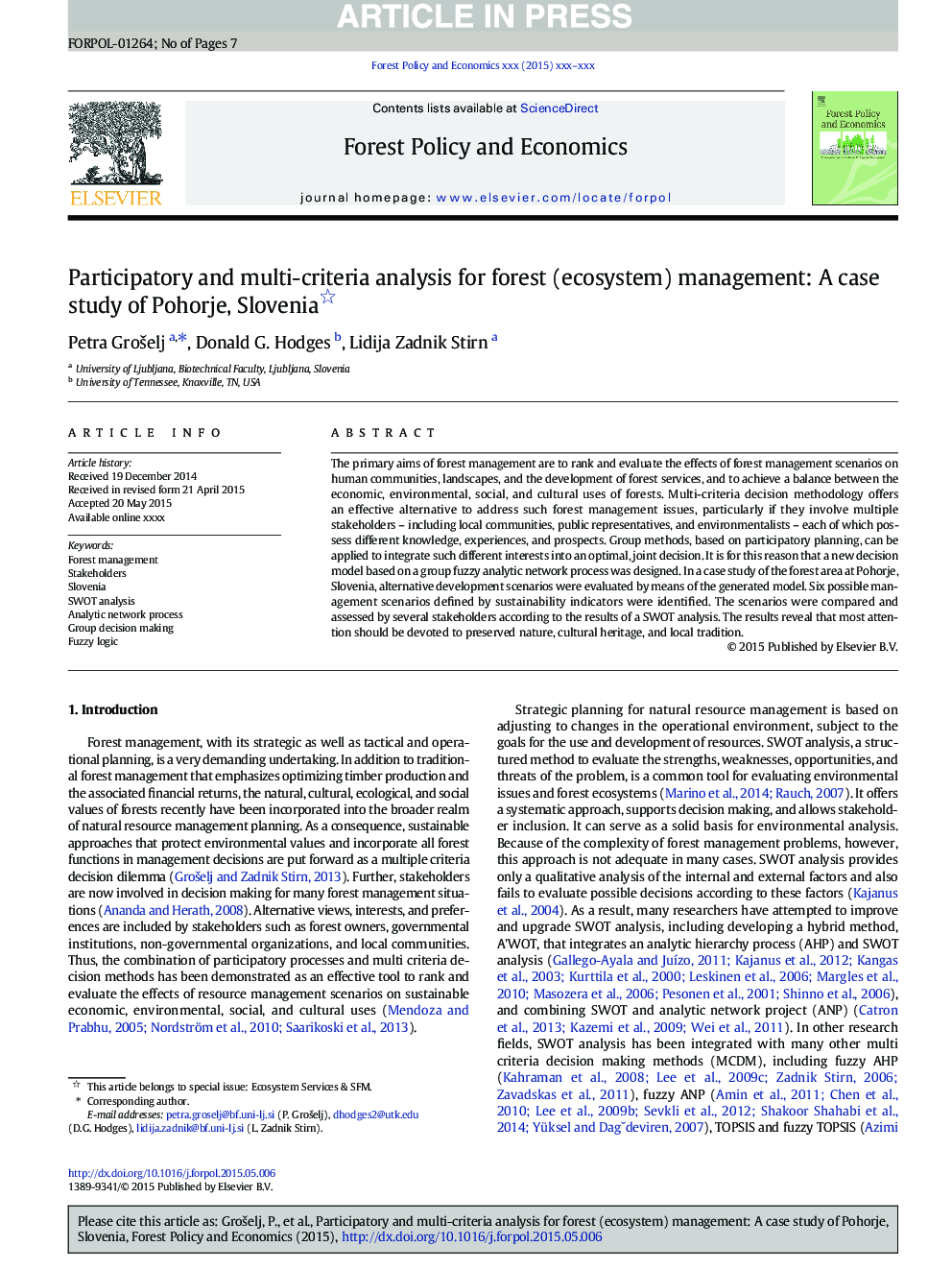| Article ID | Journal | Published Year | Pages | File Type |
|---|---|---|---|---|
| 6544856 | Forest Policy and Economics | 2016 | 7 Pages |
Abstract
The primary aims of forest management are to rank and evaluate the effects of forest management scenarios on human communities, landscapes, and the development of forest services, and to achieve a balance between the economic, environmental, social, and cultural uses of forests. Multi-criteria decision methodology offers an effective alternative to address such forest management issues, particularly if they involve multiple stakeholders - including local communities, public representatives, and environmentalists - each of which possess different knowledge, experiences, and prospects. Group methods, based on participatory planning, can be applied to integrate such different interests into an optimal, joint decision. It is for this reason that a new decision model based on a group fuzzy analytic network process was designed. In a case study of the forest area at Pohorje, Slovenia, alternative development scenarios were evaluated by means of the generated model. Six possible management scenarios defined by sustainability indicators were identified. The scenarios were compared and assessed by several stakeholders according to the results of a SWOT analysis. The results reveal that most attention should be devoted to preserved nature, cultural heritage, and local tradition.
Keywords
Related Topics
Life Sciences
Agricultural and Biological Sciences
Forestry
Authors
Petra Grošelj, Donald G. Hodges, Lidija Zadnik Stirn,
